- Elizabeth Adams
- https://www.smu.edu/Simmons/About-Us/Directory/Research-in-Mathematics-Education/Adams
- STEM Evaluation Researcher
- Integrating Human Computer Interaction, Machine Learning, Game Design, and Educational Assessment in a STEM+C Curriculum
- https://humingamelab.com/Research/Projects/research/projects/Teaching-Computer-Science-and-Computational-Thinking-with-Community-Gaming.html
- Southern Methodist University
- Corey Clark
- https://humingamelab.com/About/People/people/clark-corey.html
- Deputy Director, Research / Assistant Professor
- Integrating Human Computer Interaction, Machine Learning, Game Design, and Educational Assessment in a STEM+C Curriculum
- https://humingamelab.com/Research/Projects/research/projects/Teaching-Computer-Science-and-Computational-Thinking-with-Community-Gaming.html
- Southern Methodist University
- Paul Foster
- Graduate Research Assistant
- Integrating Human Computer Interaction, Machine Learning, Game Design, and Educational Assessment in a STEM+C Curriculum
- https://humingamelab.com/Research/Projects/research/projects/Teaching-Computer-Science-and-Computational-Thinking-with-Community-Gaming.html
- Southern Methodist University
- Leanne Ketterlin Geller
- https://www.smu.edu/simmons/About-Us/Directory/Education-Policy-Leadership/Ketterlin-Geller
- Professor
- Integrating Human Computer Interaction, Machine Learning, Game Design, and Educational Assessment in a STEM+C Curriculum
- https://humingamelab.com/Research/Projects/research/projects/Teaching-Computer-Science-and-Computational-Thinking-with-Community-Gaming.html
- Southern Methodist University
- Jake Klinkert
- http://www.ljklinkert.com/
- Graduate Research Assistant
- Integrating Human Computer Interaction, Machine Learning, Game Design, and Educational Assessment in a STEM+C Curriculum
- https://humingamelab.com/Research/Projects/research/projects/Teaching-Computer-Science-and-Computational-Thinking-with-Community-Gaming.html
- Southern Methodist University
- Eric Larson
- http://eclarson.com
- Associate Professor
- Integrating Human Computer Interaction, Machine Learning, Game Design, and Educational Assessment in a STEM+C Curriculum
- https://humingamelab.com/Research/Projects/research/projects/Teaching-Computer-Science-and-Computational-Thinking-with-Community-Gaming.html
- Southern Methodist University
- Vinson Luo
- Graduate Student
- Integrating Human Computer Interaction, Machine Learning, Game Design, and Educational Assessment in a STEM+C Curriculum
- https://humingamelab.com/Research/Projects/research/projects/Teaching-Computer-Science-and-Computational-Thinking-with-Community-Gaming.html
- Southern Methodist University
- Ching-Yu Tseng
- Graduate Research Assistant
- Integrating Human Computer Interaction, Machine Learning, Game Design, and Educational Assessment in a STEM+C Curriculum
- https://humingamelab.com/Research/Projects/research/projects/Teaching-Computer-Science-and-Computational-Thinking-with-Community-Gaming.html
- Southern Methodist University
Public Discussion
Continue the discussion of this presentation on the Multiplex. Go to Multiplex








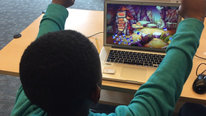
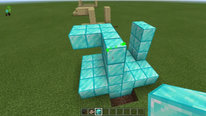

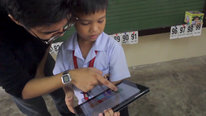
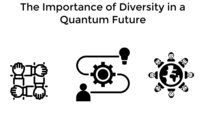
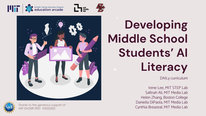
Elizabeth Adams
STEM Evaluation Researcher
Welcome to our STEM+C video! We are currently developing a middle grades game-based learning experience in Minecraft with an online supplemental application called the Minecraft Factory Planner. The learning experience focuses on middle grades computational thinking skills and concepts. Feel free to comment on any aspect of our video. We would love to hear from others about their experiences developing and evaluating online games. We are especially interested to hear from teachers about how they could see this game and computational thinking integrating into their current curriculum or content standards. Thank you for engaging with our video!
Erin Krupa
Bernard Yett
Cristo Leon
Dalila Dragnic-Cindric
Postdoctoral Researcher
I loved learning about your project, where an extremely popular game such as Minecraft is used for teaching computational thinking. I’m delighted to hear that Minecraft is working with you all to investigate the use of their game for educational purposes. As a scientist, a STEM education researcher, and a parent of two avid Minecraft players, I have so many questions!
Some teachers might not be as comfortable with Minecraft as their students. I wonder if they need to be proficient to teach with this game effectively, and if so, how do you plan to help them become just as well-versed as some of their students might already be?
I’d be interested to learn how do you plan to evaluate the impact of using Minecraft for teaching and learning CT. Will you evaluate students’ learning or teachers’ applications of and teaching with Minecraft in their classrooms, or maybe all of the above?
I look forward to our conversation and thank you for your fascinating work.
Pati Ruiz
Cristo Leon
Eric Larson
Associate Professor
Great questions! Part of our initial experiments are to evaluate the usability of the game from differing perspectives. The first is for ensuring that our introductory tutorials are sufficient to orient unfamiliar players. Currently, we are evaluating a guide that introduces many aspects of the game to the player, while also setting up the story to drive exploration. Second, we are also trying to understand how the gameplay translates to understanding concepts related to data collection, cleaning, and understanding with these early tutorials.
Our evaluation uses a phased approach over the next few years. Right now we are conducting cognitive walkthroughs with early phases of the game, but these will turn into observed gameplay sessions in controlled environments, then ramp up to the usage of the game in a classroom, and eventually across multiple schools. Each phase provides iterative points to address deficiencies in the gameplay and how it influences understanding of various CSTA standards.
We also have feedback from an educator advisory panel that is helping us to ensure that the transition to the classroom is as seamless as possible. These sessions stressed how important it is to have the game connect with an LMS so that teachers can launch worlds, assignments, and evaluate progress directly from the LMS dashboard. This also helps mitigate teacher unfamiliarity with the Minecraft setup (or at least, that is the hypothesis).
Thanks for your interest! Would love to talk more about these parts fo the research.
Pati Ruiz
Dalila Dragnic-Cindric
Cristo Leon
Pati Ruiz
Learning Sciences Researcher
Thanks for this response to Dalila's question. I am also interested in the transition to classrooms and think the LMS integration could definitely help teaches access the activity more easily. When it comes to students, I wonder how you plan to onboard students who might not have exposure to Minecraft. How will scaffolding work for the gameplay sessions? I used to teach Middle School students and know that many would be very interested in this type of exploration in Minecraft - but I'm wondering about the ones who would not be as excited about this activity and supporting students with IEPs as well.
Eric Larson
Associate Professor
Also great questions. For now, we have just a simple introductory tutorial to Minecraft. However, we plan on expanding this so that there is scaffolded introductions in the game (including the game mechanics like moving around, accessing a menu, explanation of menus, etc.). This lengthens the amount of time that some players need for the introduction, but is absolutely necessary to accommodate the differing experience levels. We also anticipate having a "skip this tutorial" button for more experienced players--but the assumption will be that they are not familiar. Not everyone will be excited by Minecraft, but we hope to generate some level of interest for everyone.
I haven't thought enough about students with IEPs. That's a great point that we do not yet have a solution for.
Jodi Asbell-Clarke
Hi - great project! I am wondering how you are assessing CT learning, and how you are measuring flow and the affective states you mentioned (e.g frustration). I also noticed that you mentioned breaking down the CT practices into sequential steps. Are they always sequential? In our work, we find the CT is very iterative - so we steered away from sequential measurement - thus I am wondering how you are sequencing those steps. thanks! exciting stuff!!
Dalila Dragnic-Cindric
Leanne Ketterlin Geller
Professor
Dear Jodi, Thank you for watching our video and asking these great questions! I wanted to chime in about your question related to the standards. We are decomposing CT practices into pre-requisite and targeted knowledge and skills, but we also see them as intertwined and their development as iterative, as you noted. For example, in one CT standard focused on data interpretation, we decomposed the standard into subcomponents that also relate and build on other CT standards. However, we decided to decompose the standards so we could build in opportunities for students to demonstrate their learning as well as mastery of the standards.
Jodi Asbell-Clarke
cool - we found that the overlap in practices made it very difficult to validate assessment items of each practice. We could get an aggregate measure of CT but haven't yet figured out how to measure the practices independently. Hope you have more luck! :)
Valerie Faulkner
Great stuff! I have a fantasy that we could teach driver's education this way. Computer games where actual physics guides the decisions and penalties accrue for poor driving behavior : )
Embedding decision making and mathematical understandings within the structure of a game sounds amazing. I am curious, does the play within the game support kids in knowing what they now know from building into higher levels? In other words, what types of connected supports would teachers need to make to maximize the value of this learning--or is the understanding of what one has learned also figure into the structure of the learning in the game.
I am wondering too whether you find yourselves wondering about the definitions of instrumental learning versus conceptual learning? We need them both, but so many schools of thought seem to see them as diametrically opposed. Has your work helped you to understand this area better?
Thanks!
and Hello to Elizabeth.
Dalila Dragnic-Cindric
Leanne Ketterlin Geller
Professor
Dear Valerie, Thanks for your interest in our project and for sharing these thoughts and questions. Regarding your question about gameplay and learning, we found that we needed a bridge between the CT standards and the gameplay mechanics, and that is what lead us to the companion application, called the Minecraft Factory Planner. When we started decomposing the CT standards and aligning them with components of gameplay in Minecraft, we noticed that there were a number of CT standards that could not be addressed (meaning that students would not have an opportunity to learn them) with just Minecraft alone. We needed to make their processing and actions visible to them. That is how we decided we needed the company application. This allows students (and teachers) to develop understanding and display their learning. Thanks again for your thoughtful questions.
Elizabeth Adams
STEM Evaluation Researcher
Hi Valerie! So great to hear from you. Thanks for checking out our video. Your comments are so thoughtful. I want to add on to Leanne's comment and focus on your second point about instrumental and conceptual learning. Part of our game development phase included decomposing components of the standards and the game separately and then integrating. I learned that games are made up of loops including the primary, secondary, and tertiary loops. The primary loops are rote behaviors (e.g., chopping trees, which in our game relates to collecting data) and are similar to instrumental learning; whereas the tertiary loops are high-level conceptual learning (e.g., optimizing the number of trees chopped using computational tools and comparing solution methods with other students in game). The game allows for us to integrate these different types of learning experiences. Thanks for commenting!
Dalila Dragnic-Cindric
Annie Wilhelm
Suzanne Otto
Teacher / Fellow
Hello! I've enjoyed hearing about your project and find the adaptation of existing platforms to be a great strategy. Building on existing student love for Minecraft and teacher proficiency and comfort with Canvas ensures that many of the hurdles with introducing a new technology are non-existent.
As a high school teacher, I'm always thinking about where a new teaching tool "fits in" to already over-committed classroom schedules. Where do you see your games being used? Will they be designed to fit within core classes or specific electives? Do you see them rolling out for all students or for a student audience with existing computer science interests? I believe that aligning to core standards will be a key to building support for broad implementation within schools.
I'm also curious about your plans to support teachers through PD. I'm not at all familiar with Minecraft, so would need significant support to learn enough about this game to keep my students from running circles around me. Although I've found myself in situations where students teach me technology tricks, I'd need to develop some background to feel comfortable being "in charge" of a game that many students already know so well.
Elizabeth Adams
STEM Evaluation Researcher
Hi Suzanne. Thank you so much for commenting on our video. Your questions are very thoughtful. We are aligning the game experience to several middle grades CSTA standards, which we identified in collaboration with our Educator Advisory Panel. Our goal is for the game to have broad applicability in mathematics, science and computer science courses. The game interfaces with Canvas so teachers will be able to view a summary of students' progress in game without entering Minecraft themselves. Teachers will be able to differentiate by assigning new or additional practice tasks based on evidence of learning and mastery. As former teachers, we completely understand the levels of overwork teachers experience, and we hope that Canvas will make it easy for them to use and monitor students' progress in game (without actually needing to enter the game). We recognize that we will need to provide support, which we would love to hear more from you on how this support might look, and we are hoping that use of the game will require minimal PD for teachers. Thank you so much for commenting!
Ning Wang
Very interesting project! The game looks really fun!
Elizabeth Adams
STEM Evaluation Researcher
Thank you so much, Ning! We appreciate you watching our video and commenting.
Ning Wang
Ning Wang
Do you use Unity to develop the video? Is this a cooperation between the computer science department and the education department in SMU? How long did it take you to create this game at this level?
Elizabeth Adams
STEM Evaluation Researcher
Hi Ning, SMU is lucky to have a top notch game design program. This STEM+C project is a collaboration between the following: Guildhall (Game Design), Lyle (Engineering and Computer Science), and Simmons (Education). We are also collaborating with Mineplex. We are currently in our second year of the project.
Eric Larson
Associate Professor
To add to Beth's response, we don't use Unity for this. Actually, we run a version of Minecraft directly on one of their EDU servers. We are able to access the data of a the server through queries and even manipulate the inventory and spawning in the world through API calls. We can create the game scenario by scenario, so the process is iterative in development.
H Chad Lane
Great project! I love the point you make in the video about leveraging existing video games rather than building a new one from scratch. I have believed for a long time that building something new and convincing kids that it is worth their time (I do informal learning primarily, so this is a must) is very very difficult. With Minecraft, you have instant interest and willingness. When we have collected data by recruiting on museum floors, we often say to the kids "Would you like to try out our Minecraft worlds?" and it works like a charm.
But, we have also discovered a downside - that is that kids often get into it and then revert into their usual play patterns and activities, which sometimes conflict with the educational goals. For example, when we have them build habitats for survival on exoplanets, the habitats somehow turn into dream homes with big screen tvs, swimming pools, etc. We have to do a lot of nudging to get them back on track and thinking about habitability etc. (while still keeping them engaged). Have you guys had any similar (or different) challenges?
Dalila Dragnic-Cindric
Elizabeth Adams
STEM Evaluation Researcher
Hi Chad, thank you so much for watching our video and commenting. We were drawn to Minecraft for exactly the reasons you mention. Many students are already interested, and the game allows for "stealth" learning and an immersive state of flow. We are currently engaged in cognitive walkthroughs with novice players. I think for this reason, we have not seen the issues that you mention where players revert back to usual patterns. This information is helpful as we move forward this summer with cognitive walkthroughs with players who have more fluency with the game. We will keep it in mind that we might want to reach out you if we experience similar challenges to brainstorm solutions for keeping students on track. I can see why building a home with a massive swimming pool and big screen tv would be enticing!
Eric Larson
Associate Professor
Thanks Chad! We agree. Right now we have been controlling the inventory of players pretty carefully with the game design. So at early stages, they do not have the materials or capability to simply play the game like they might be accustomed to at home (or in creative mode). This gives us some control over off-topic behavior, but its not complete control. This might become more of an issue for later stages of the storyline where players have more freedom. Any guidance or tips you have would be very helpful!
Blake Sun
I love this idea of taking something that is already popular, such as Minecraft, and adding even greater educational value to it because of how technology and gaming have become such important aspects of life and society. I also completely agree with the goal of maintaining "flow" and finding a balance between boredom and frustration because it can be very easy for children to become discouraged or give up if things are too challenging, or simply move away from the game if it is too easy. I hope that this idea can also be incorporated into other popular games, where children can be educated without the expense of entertainment. Thank you guys for sharing!
Leanne Ketterlin Geller
Professor
Thanks for watching our video, Blake. We appreciate your interest in our project.